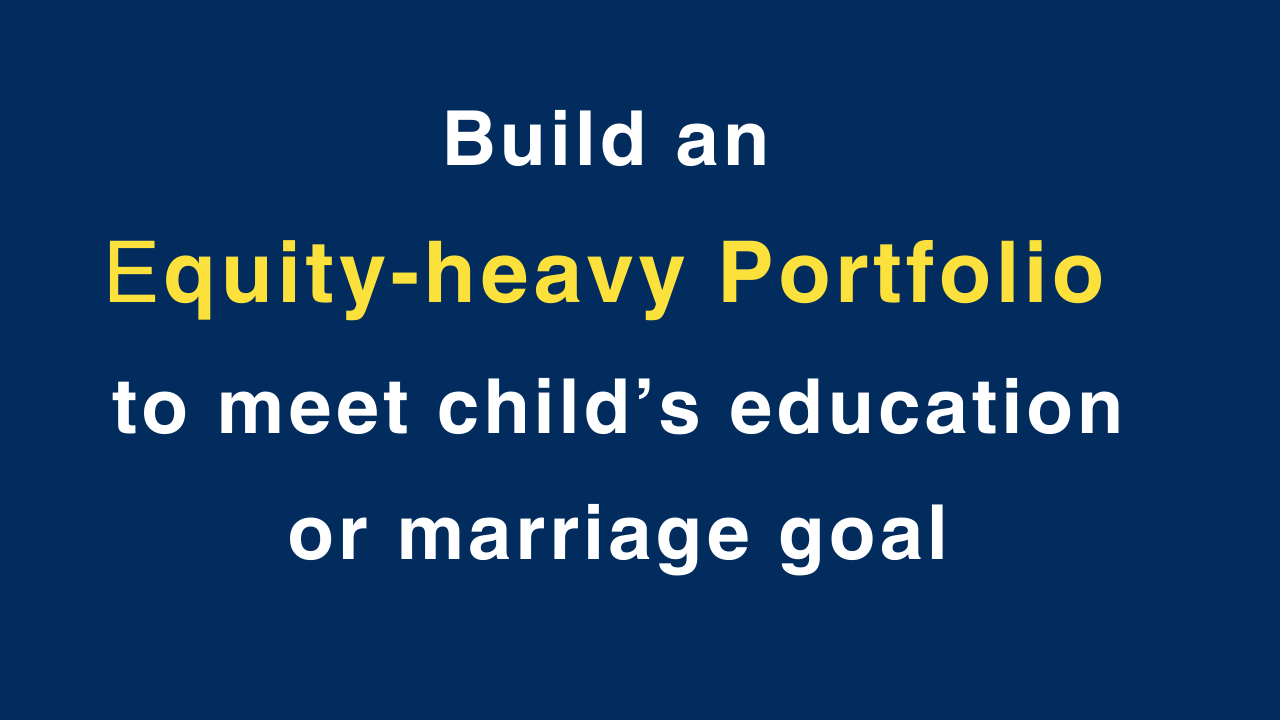Latest news & updates from us

Only this will ensure that you are able to meet the escalation in costs over a 15-20 year horizon.
For Indian parents, providing the best education that they can afford to their children is a very important goal. Getting a girl child married into a good family is another important one. In fact, many parents start saving and investing for these goals right from the day the child is born. However, besides saving adequately, having the right asset allocation and choosing the correct investment instruments is equally important. These are aspects where many parents go wrong.
Before you begin to save for the education or marriage portfolio, first buy adequate term insurance for your family. This will ensure that even in the case of an unfortunate event, there will still be money for the children’s education and marriage.
The next step is to begin saving any extra money that comes your way. Children get small sums of money on several occasions from relatives and friends. Parents often squander this money because they consider the amounts to be too small to be worth saving. However, if such sums are saved diligently, they can add up to a tidy sum by the time the child is ready to go to college or get married.
Next comes the task of constructing the right portfolio for these goals. Since they are very significant goals, parents often err excessively on the side of caution and invest all the money in fixed-income instruments, such as recurring deposits. Actually, you should invest the bulk of the portfolio in equities, for two reasons. One, these goals would be at least 15-20 years away when you begin investing for them. Hence, any volatility that you encounter in these portfolios can be ignored. The second reason is high inflation. The cost of education, especially, tends to escalate at a much faster rate than the Consumer Price Index (CPI) based inflation. If you are to have any chance of meeting this rapidly rising expenditure, the bulk of your portfolio must be invested in equities. Aggressive investors may invest 80-90 per cent of the portfolio in equities and 10-20 per cent in fixed-income instruments and gold. More conservative investors may have a 50-65 per cent allocation to equities and the rest to fixed-income and gold.
For the equity portion, investors should allocate to different types of market cap funds (large-cap, multi-cap and mid- and small-cap funds). This allocation should be made in such a way that 60-70 per cent of the underlying portfolio is invested in large-cap stocks and 30-40 per cent in mid- and small-cap stocks. More aggressive investors opt for a 50 per cent allocation to large-cap stocks and 50 per cent to mid- and small-cap stocks.
In most portfolios, a 10 per cent allocation to gold is advisable as this reduces portfolio volatility by providing diversification.
When planning an education portfolio, bear in mind that you will require a large sum of money at the time of admission and smaller sums spread over the next three-four years. Your portfolio must be structured in such a way that you can withdraw the money when the child is ready to go to college. Investing in a mix of equity funds and debt funds, or hybrid funds, will allow you the required liquidity. Instead, if you lock your money up in illiquid instruments, you may have difficulty in meeting your obligations.
Instruments like Public Provident Fund (PPF) may be used for the fixed-income allocation with the caveat that the 15-year tenure gets over before your child is ready to go to college.
For the 10 per cent allocation to gold, you may use sovereign gold bonds (which provide 2.5 per cent interest on the invested amount), provided your goal is beyond eight years. These bonds are also quite illiquid. But if the goal is closer, you may use gold exchange traded funds (ETFs) to invest in gold, as they are more liquid. If you are saving for your child’s marriage, these ETFs can be sold and the money obtained can be used to buy gold jewellery for your child.
Several mutual funds labelled as children’s funds are available. The advantage of such labelled funds is that investors don’t touch the money even when they are in dire need, since the money is earmarked for their child’s needs. However, check the track record and expense ratio of these funds before investing in one. Usually, it is better to go with plain vanilla equity funds with outstanding long-term track records rather than use these labelled funds.
Three years before the goal, start shifting money from your equity funds to ultra-short-term debt funds or liquid funds. This will ensure that a market correction does not jeopardise these goals.
Think largecap investing, think Exchange Traded Funds
20 July 2024
How to build a multi-asset portfolio using ETFs
28 June 2024
Factor ETFs: Why you should invest for long-term returns
19 June 2024

Simply fill the details, connect your bank account & upload your documents.
Open An Account
Post a comment